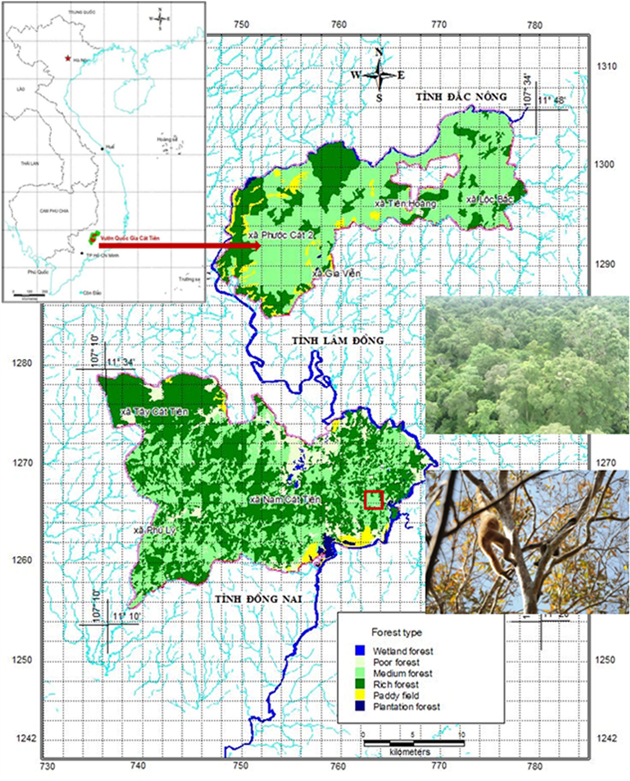The southern yellow-cheeked crested gibbon (Nomascus gabriellae) is distributed east of the Mekong River and south of the Srepok River in Cambodia, and south of the Ba River and Srepok River in Vietnam. It is an endangered species but information on the feeding ecology and behavior of Nomascus gibbons is still very limited.
Prof. CHEN Jin’s team of Xishuangbanna Tropical Botanical Garden (XTBG) and their Vietnamese collaborators conducted a study to understand the feeding behavior and activity budget of southern yellow-cheeked crested gibbons living in the lowland tropical forests at Cat Tien National Park of Vietnam.
The researchers first characterized the diurnal and seasonal diet, feeding behavior, and activity patterns of the southern yellow-cheeked crested gibbons. They then explored the relationships among diet, temperature, rainfall, and activity budgets.
Using a comprehensive survey of gibbon activities and habitat use under natural conditions for 1 year, they were able to characterize the diet, feeding behavior, and activity budget of a group of individuals representing the endangered species.
They found that the diet was generally dominated by fruits during the rainy season and leaves during the dry season, with less consumption of flowers, and other plant parts (buds, shoots, petioles, and roots). The species also consumed plant items from epiphytes and vines, as well as insects and bird eggs, in addition to trees.
The percentage of time allocated to different activities varied significantly across months and between the dry and rainy seasons. Monthly variation in the activity budget was strongly related to changes in diet.
The gibbons respond to climate seasonality and seasonal variation of food resources and water availability mainly by adjusting their time spent feeding and traveling. They decreased traveling time and increased feeding time to decrease energy loss when the temperature and rainfall was low.
The results showed that the activity budget and diet of the southern yellow-cheeked crested gibbon are associated with seasonal shifts in climate. Its behavior (time allocation and diet) seemed to shift seasonally along with climate factors and fruit availability.
The study provides a better understanding of the behavior of yellow-cheeked gibbons, which can inform reserve managers of the season, time, and areas where increased patrolling efforts may be needed.
The study entitled “Feeding behavior and activity budget of the southern yellow-cheeked crested gibbons (Nomascus gabriellae) in a lowland tropical forest” has been published online in American Journal of Primatology.
Contact
CHEN JIN Ph.D Principal Investigator
Key Laboratory of Tropical Forest Ecology, Xishuangbanna Tropical Botanical Garden, Chinese Academy of Sciences, Mengla, Yunnan 666303, China
Tel: 86-691-8715457
E-mail: cj@xtbg.org.cn

Location and study site of the studied gibbon group in Cat Tien National Park.
The photographs show the evergreen forest during the wet season and the semi-evergreen forest during the dry season.
(Images by Thanh H. Bach)

